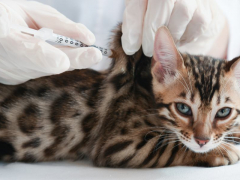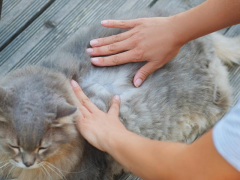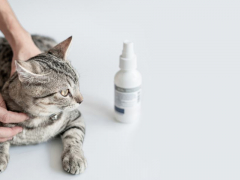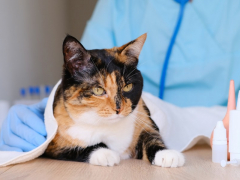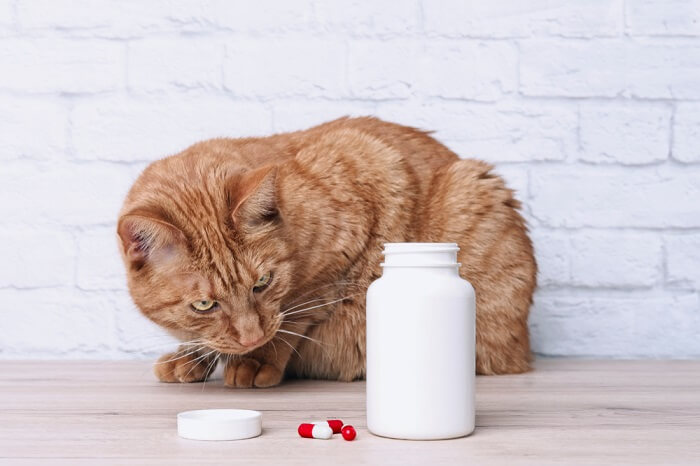
Amantadine is a drug sometimes used as an add-on medication to assist with pain management in dogs and cats. In this article, you’ll learn how amantadine works, when it’s most often used in veterinary medicine, potential side effects, and some frequently asked questions.
Amantadine For Cats Overview

About Amantadine for Cats
The drug amantadine is classified as an antiviral drug and is used sometimes for those applications, but its use in veterinary medicine is primarily as an adjunctive, add-on medication to assist with pain control thanks to its ability to be an NMDA antagonist.
Amantadine is not a particularly good pain medication on its own. When it is used, it is most often utilized in addition to more primary pain medication like an opioid or anti-inflammatory medication like a non-steroidal anti-inflammatory (NSAID) or steroid.
It also appears to be most helpful in states of chronic pain, not acute pain. Examples may include long-term pain from osteoarthritis, intervertebral disc disease (back/spinal cord pain), or chronic nerve pain conditions.
What Does Amantadine Do for Cats?
Amantadine has properties that allow it to bind at a receptor in the body called n-methyl-d-aspartate, or NMDA. When transmitters glutamate or aspartate bind to the NMDA receptor, chronic pain may perpetuate or worsen. As amantadine can bind to this receptor, it can block those other receptors from continuing a pain signal, helping to reduce chronic pain.
There can be many other receptors involved in pain stimuli, and other medications that are more useful as initial therapy to address pain, especially acute or short-term pain, which is why the use of amantadine is typically only considered in addition to other primary therapies when needed.
Amantadine’s antiviral applications are fairly limited in general and so it does not have effect against viruses commonly seen in kitties and is not often used in veterinary medicine for this purpose.
Side Effects of Amantadine for Cats
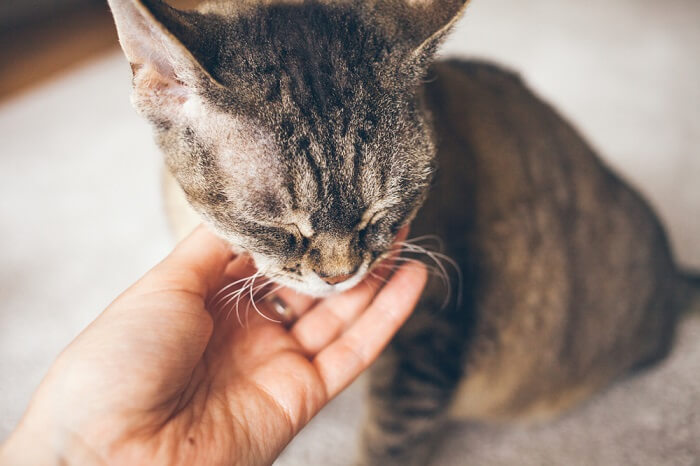
Possible side effects often occur more in the early use of the drug and may subside over time, so if the signs become more serious or persist, consult your veterinarian.
Some common and mild effects can be seen with prescribed amantadine use in cats, including GI upset (loose stools or diarrhea), and behavioral changes like agitation and anxiety. These often occur more in the early use of the drug and may subside over time. However, if these signs become more serious or persist beyond a week or two of initial therapy, a veterinarian should be consulted to discuss whether the medication should be continued.
More concerning adverse effects seen with overdoses can include tremors, heightened anxiety, ataxia (uncoordinated movement), restlessness, dry mouth, hypersalivation (drooling), and vomiting. In humans, heart arrhythmias, seizures, kidney failure, and respiratory distress have been reported with overdoses.
Amantadine has a very narrow range of dosage in pets, and must be dosed very carefully, as overdoses can be very serious. The toxic dose for an average 10lb cat could occur at around 130mg with signs of behavioral changes at just half that dose. Thus, exposure to a single 100mg tablet or capsule could lead to concerning signs and possibly emergent need for veterinary care in a cat.
Because of its narrow dose range and potential for severe side effects, if not used as recommended, it is often advised that any concerns for an overdose or adverse effects from amantadine be referred to a veterinary toxicologist either through ASPCA Animal Poison Control (1-888-426-4435) or the Pet Poison Helpline (1-855-764-7661). A fee does apply, but your vet will often need the toxicologist’s advice to help develop a treatment plan for your cat.
Amantadine for Cats Dosage
Because amantadine has such a narrow dosage range, it should only be dosed and prescribed by your veterinarian as deemed appropriate.
The 100mg capsules used in humans are typically too large to be used safely in pets. While the generic oral liquid solution may be dosed more accurately in pets, it reportedly has a very bad taste, which could make it very difficult to administer in a kitty, making it less effective.
Because of these issues with the generic forms of amantadine, it is most common for this drug to be ordered for feline patients through a compounding pharmacy. This allows for more safe and accurate dosing, as well as flavoring to make it more palatable.
Conclusion
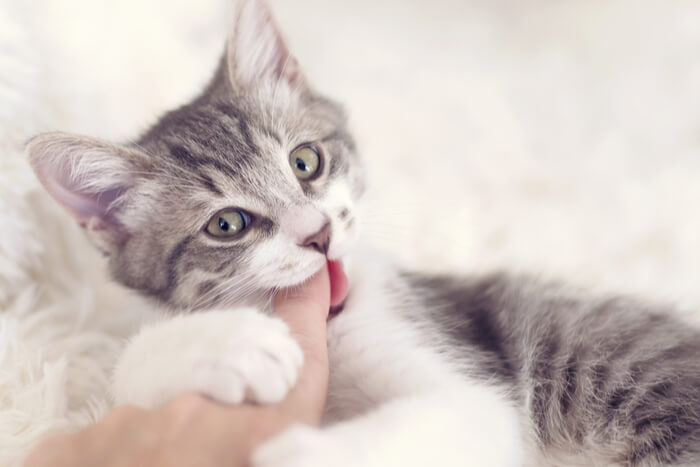
Cats will sometimes bite or exhibit other aggressive behaviors because they are in pain.
Amantadine can have an important role in the management of some chronic pain conditions in cats. However, it is usually not a good first line or sole choice for pain relief and its narrow range for dosage and safety in pets requires that it only be prescribed and dosed through an attending veterinarian.
If you feel your kitty is experiencing signs of chronic or break-through pain, make sure to speak with your veterinarian first, to see if utilizing amantadine may be an option.
Drug Dosing Disclaimer: We are only able to provide doses for medications that are FDA approved for use in cats and only as the label guidelines dictate. For medications that are used off-label we can only provide guidelines and safety information for use. Safe and appropriate dosing for off-label medications can only be determined by a primary care veterinarian.
We encourage you to work with your veterinarian to determine if a particular medication is appropriate for your cat. Changing or adjusting a dose for your cat on your own without consulting with a veterinarian can carry risk. We do not encourage use of medications prescribed for human use in pets without first consulting with a primary care veterinarian.
